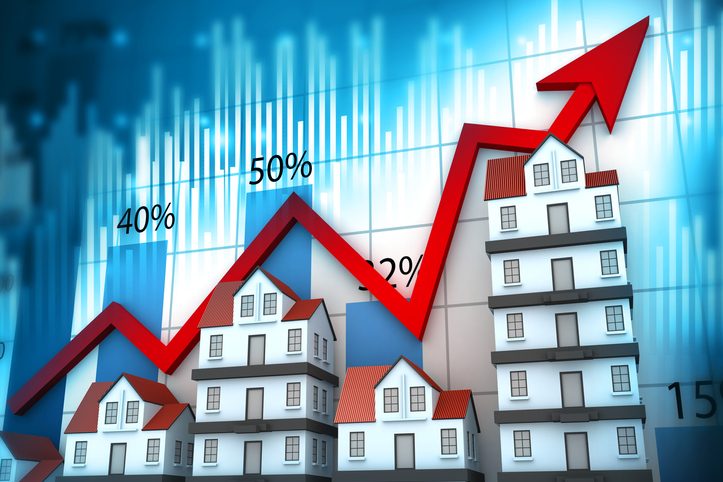With many unknowns in the current real estate market, it can feel overwhelming. Concerns about the future leave many on edge.
The Urban Land Institute (ULI) and PwC US released the “Emerging Trends in Real Estate® 2024“ report, introducing “The Great Reset.” It speaks to how the industry must form new ‘norms’ and can no longer rely on the past to determine how the market will function going forward.
How can you proceed with confidence amidst all the unknowns?
With all this unpredictability, there is an invitation to stay informed and adopt adaptability. Despite inevitable fears of the future, a bigger picture holds promise and excitement – if you know how to look for it.
RE Mentor is here to help you navigate all the changes in the market. Here’s what to look forward to in real estate next year and how we can support you.
Disruptors To Navigate In 2024
It’s no secret that the future of real estate is more unknown than ever. How should you move forward?
The leading disruptors to look out for in 2024, according to the report mentioned above, are construction costs, labor costs, and remote work.
Labor and Construction Costs: These costs influence the fundamental aspects of real estate. They affect the:
- Affordability of housing
- Financial viability of development projects
- Supply and demand dynamics in the market
“Rapidly rising federal debt could potentially ‘crowd out’ private investments in the industry, leading to slower economic growth and higher interest rates…creating long-term delays in property construction, investments, and returns.”
Remote Work: More people are working remotely and standing firm in their choice to do so. Office buildings have lost their appeal to investors, as people tend to stay home more. This has also influenced people to be clear on where they want to live while they work remotely.
The experience of “home” is changing, bringing many changes in preference in the real estate market.
These disruptors are changing the real estate market as we know it. But educating yourself and adapting to the tides is essential in riding these waves with grace.
Trends To Be Ready For And How It Impacts Multifamily

Although the future of real estate is unpredictable, there are some trends to note. Being aware of these trends helps to bring a sense of reliability.
Key trends include:
- A strong retail outlook. Retail spaces are skyrocketing because of their appeal. Although e-commerce has taken much of the limelight since 2020, people still shop at local retail shops – and it’s growing. This may be due to the increase in remote workers looking for activities outside their homes.
- Commute work/remote work models. People are standing firm in their choice to work from home and maintain a hybrid model.
- The continued appeal of the Sun Belt markets. The Sun Belt continues to be an attractive area for households, firms, and investors. There are lower regulations and taxes, and a growing labor force. Many of the emerging markets to look out for reside within the sun belt.
- Challenges due to rising federal debt.
- The need for real estate to address climate challenges. This could impact the Sun Belt markets in the future.
- Downtown Restoration. With more working people at home, the concept of downtown is gaining new traction as a place for people to work and play.
So how do these points impact Multifamily Real Estate?

Hybrid Work and Office Space: According to the above report, the office building sector is not expected to return to its pre-pandemic state. Because of this, there is a lack of appeal in office building investments. Less need for office spaces changes multifamily real estate as work and commuting preferences evolve.
Sun Belt Attractiveness: This trend may influence multifamily real estate as population growth and increased economic activity could drive demand for more rental housing.
Housing Affordability: The above report identifies housing affordability as a key challenge. There is a need to build more housing at various price points. This relates to multifamily real estate as the sector plays an important role in addressing housing needs across different income levels.
Downtown Revitalization: The report discusses the need for downtowns to reinvent themselves. This trend could impact the demand for urban multifamily housing, depending on the success of downtown revitalization efforts.
According to ULI’s report, here’s a list of emerging markets to look out for:
Nashville
San Diego
Phoenix
Dallas/Fort Worth
Boston
San Antonio
Atlanta
Raleigh/Durham
Austin
Seattle
In summary, the report predicts how the future market will influence the multifamily real estate sector. Noting these changes and responding creates resiliency as a multifamily real estate investor.
Be Resilient For 2024: The Great Reset

These trends for 2024 show that “it’s clear that the real estate industry is entering a new era of thinking, building, and operating.” This can feel scary. But, reading the trends and staying informed can go a long way in thriving during the current market.
At this turnkey moment, there is a call for innovation. Calling upon professional guidance is essential to gracing this innovative moment. Luckily, RE Mentor displays its guidance through our name! We mentor people just like you to be educated and resilient through any changes in the market.
We have guided many students through all sorts of unknowns in the market, and we aren’t stopping anytime soon. Let us give you the support and guidance you need in these challenging times!

Many people are not renewing their apartments in California as they move eastward, thus bringing the value of MFA’s there down. That creates a buying opportunity. I can see San Diego, being more conservative compared to the other large cities in the state, being the first in that trend.
People will eventually return & when they do, there will be lucrative returns for the investor that bought low.